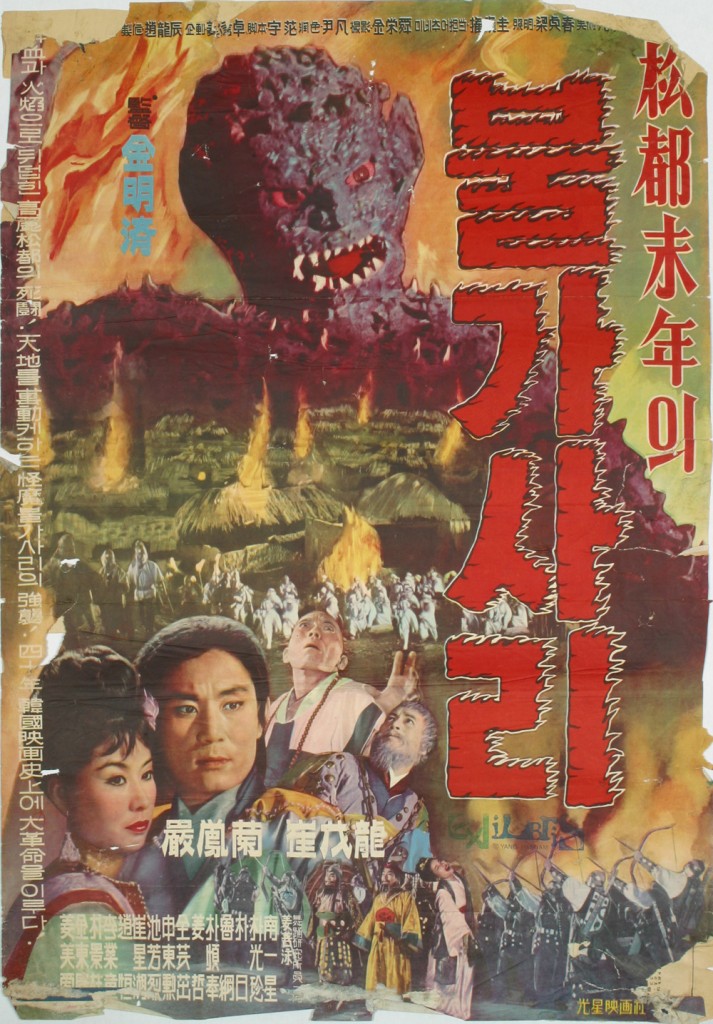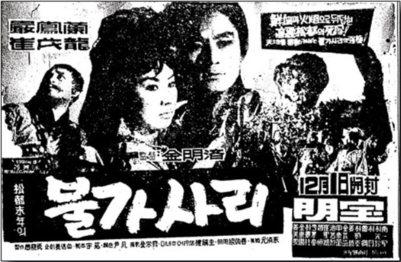Bulgasari (lost South Korean monster film; 1962): Difference between revisions
No edit summary |
No edit summary |
||
| Line 14: | Line 14: | ||
==Gallery== | ==Gallery== | ||
<gallery mode=packed heights=175px> | <gallery mode=packed heights=175px> | ||
File:Bulgasari BW.PNG|Additional poster | File:Bulgasari BW.PNG|Additional poster. | ||
</gallery> | </gallery> | ||
Revision as of 23:33, 18 March 2020
Bulgasari is a 1962 South Korean monster film. The existence of the film is debated by some, as there is the possibility that the poster could be a hoax. As with most South Korean monster films, there were few international releases, so there is no concrete way to tell if this is a real film. However, given that is recognized by the Korean Film Archive, it is more likely simply one of the many Korean films that were lost as a tragic side effect of war.[1][2]
According to the Korean Film Archive, the movie took place during the era of the Goryeo Dynasty and the film was about a martial artist who is murdered and reborn as the titular iron-eating monster, Bulgasari. He then sets off to get revenge on those responsible for his death. The plot is very similar to a 1985 North Korean film with the similar title of Pulgasari, which also features a metal-eating monster and takes place in the same time period. Because of this, the 1985 film is generally assumed to be a remake.
The only known pieces of media related to the film are the posters, as it seems to have gone missing shortly after it was released. Despite this, Bulgasari is considered an important part of Korean film history. It is known as the first Korean movie to use special effects[3][4], as well as the first Korean monster film.[5]
Gallery
References
- ↑ Korean Film Archive page. Archived 07 Mar '16
- ↑ Kaijuphile article about the film. Retrieved 30 Sept '16
- ↑ Pennyway article on kaiju movies. Retrieved 18 Mar '20
- ↑ Cine 21 article on Korean film history. Retrieved 18 Mar '20
- ↑ The Hankyoreh article on the history of Korean monster films. Retrieved 18 Mar '20

